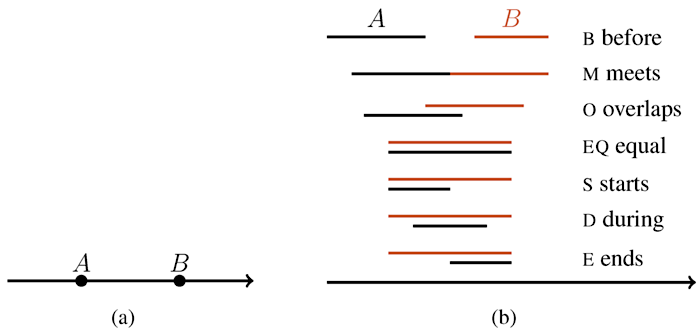
I met John Stell, a computer scientist from University of Leeds http://www.comp.leeds.ac.uk/jgs/, via a session at MIRIAD in early December 2015. John was interested in the possibility of some kind of collaboration with artists and designers around the area of qualitative spatial thinking.
Qualitative Spatial Thinking
Qualitative spatial representation and reasoning (QSRR) is concerned not only with representing spatial knowledge in the computer but also with exploring ways of thinking about space which are quite different from most computationally oriented approaches. The conventional way of representing spatial information in the computer describes locations in terms of numbers which stand for precise distances. While such methods are powerful and widely used for Geographical Information Systems (GIS) and Computer Aided Design (CAD) etc, much spatial knowledge in the arts, humanities and social sciences does not yield this kind of precise numerical information.
Consider for example: accounts of psychogeographical experience, writings about film, sketches early in the design process, rough movement ideas for dance or theatre performers, networks of concepts, attempts to map processes of co-production, movements of children observed in ethnographic research, the embodied spatial knowledge in activities such as weaving, and so on. In these examples spatial relationships are often significant. One thing is in front of another or surrounds another; a line crosses itself forming a loop; one thing is connected to two others which are themselves separate; two regions touch at the boundary but do not overlap; one path is common to two routes that diverge; etc.
QSRR focusses on these spatial relationships and aims to represent them without demanding precise information when this not needed. Two lines can cross while allowing the location of the crossing to be left vague and unspecified. By using logic rather than numbers, spatial relationships can be processed in the computer, but this qualitative approach has its origins in philosophy and suggests a view of space as constructed from these relationships instead of being a pre-existing framework into which events and objects are fitted. QSRR is not a fixed set of relationships or a piece of software that is being marketed; it is an approach to space that that has computational features which appear relatively unexplored outside parts of artificial intelligence. Links between QSRR and the arts, humanities and social sciences would not be one way applications of known techniques; they could involve the development of systems of spatial relationships that would arise from exploring these links.
I thought that a common area of interest could be found in the gestural component of musical interface design – and the development of Touch:See:Hear in particular might provide a practical opportunity to try out and test these approaches and techniques. John and I have now met a couple of times to discuss the idea and have agreed a modest collaboration that could inform the development of the installation – but possibly lay foundations for future, more substantial research outcomes and funding bids.
